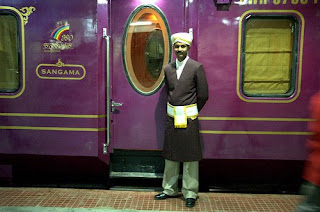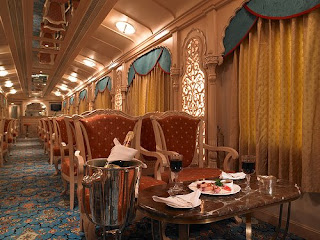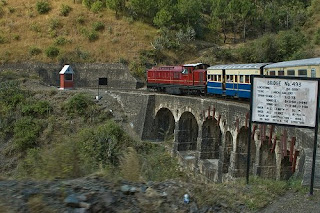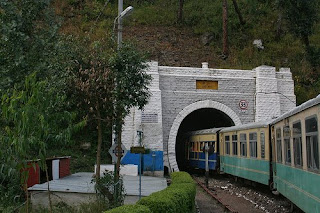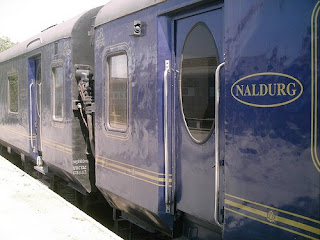Situated in: West Bengal
Also Known As: Queen of Hill Stations
Major Attractions: Ghoom Monastery, Dhirdham Temple, Tiger Hills, Bhutia Busti, Observatory Hill, Zoological Garden, Natural History Museum
Suitable Time to Visit: March to May and September to November
Darjeeling, one of the most popular hill stations of India an
 d the world alike is situated in West Bengal. The hill station is about 680 km from the state capital city Kolkata, 80 km from Siliguri and 150 km from Kishanganj in Bihar. Located at a height of 2,134 metres above the sea level, close to the Indo-Nepal and Indo-Bhutan borders, Darjeeling draws discerning travellers, honeymooners and adventure seekers from across the globe.
d the world alike is situated in West Bengal. The hill station is about 680 km from the state capital city Kolkata, 80 km from Siliguri and 150 km from Kishanganj in Bihar. Located at a height of 2,134 metres above the sea level, close to the Indo-Nepal and Indo-Bhutan borders, Darjeeling draws discerning travellers, honeymooners and adventure seekers from across the globe.Nature has blessed Darjeeling with unmatched beauty and one can experience the nature at its best here. Flanked by snow capped Himalayan mountain ranges, Darjeeling abounds with fresh invigorating hill air, lush green tea plantations, exciting trekking trails, spectacular sunrise and sunset views, rich and varied fauna. Besides, the live hearted locals welcome visitors with their open arms and offer warm hospitality.
As Darjeeling is located at very high altitude so the climate remains cold most of year, especially during winters when the temperature falls below 0 degree. Temperatures in summer remain in the range of 15-20 degrees. Don’t forget to carry sufficient warm clothes to prevent yourself from the chilly weather.
Besides being a famous hill station, Darjeeling offers excellent sh
 opping opportunities.
opping opportunities.Darjeeling is a nice place to buy decorative items, thangkas, brass statues, religious objects, jewellery, wood carving, woven fabrics and carpets. Main shopping areas are Chowrasta and Nehru Road.
Bagdogda Airport (100 km) is the nearest airport, served by several flights from Delhi and Kolkata. From the airport, taxis are available for Darjeeling. New Jalpaiguri Railway Station at a distance of 90 km is the major railhead close to Darjeeling. The toy train connects New Jalpaiguri with Darjeeling, the journey takes approximately 8 hours. Jeep services are available to Darjeeling from Silguri and New Jalpaiguri at regular intervals.
Plenty of accommodation options are available in Darjeeling. There are several good hotels, lodges and guest houses in the budget and mid-range categories.
Major Attractions in Darjeeling
Ghoom Monastery: Any trip to Darjeeling usually b
 egins with the Ghoom Monastery. Set at an altitude of 2,410 mtrs, Ghoom offers magnificent views of Darjeeling town. Ghoom Monastery has collection of rare handwritten Buddhist manuscripts and it also houses a massive statue of Maitreya Buddha.
egins with the Ghoom Monastery. Set at an altitude of 2,410 mtrs, Ghoom offers magnificent views of Darjeeling town. Ghoom Monastery has collection of rare handwritten Buddhist manuscripts and it also houses a massive statue of Maitreya Buddha. Dhirdham Temple: Situated in the heart of Darjeeling town, Dhirdham Temple attracts tourists in large number. The temple is known for its architecture which is similar to the famous Pashupatinath Temple of Kathmandu.
Tiger Hills: Perched at an elevation of 2,590 metres above the sea level, Tiger Hills offers splendid views of the sunrise. Tourists throng the Tiger Hill in early morning to have a glimpse of the spectacular sunrise. From the hills, one can also enjoy breathtaking views of snow-capped Mt. Kanchenjunga.
Bhutia Busti: Bhutia Busti is a beautiful Gompa (monastery) located at the backdrop of the Mt. Kanchenjunga. The tastefully decorated Gompa has a fine collection of Buddhist texts in its library. A branch of the Nyingmapa sect's Phodang Monastery in Sikkim, the Gompa also has a copy of the Tibetan Book of the Dead in its library.
Observatory Hill: The Observatory Hill offers magnificent
 views of Mt. Kanchenjunga and the beautiful landscape below. On the hill there are some temples and monasteries, which deserve a visit.
views of Mt. Kanchenjunga and the beautiful landscape below. On the hill there are some temples and monasteries, which deserve a visit.Zoological Garden: Zoological Garden is situated on the outskirts of Darjeeling. The zoo houses some rare varieties of Himalayan flora and fauna species, including the Siberian Tigers. The rare Red Panda is another attraction of the zoo. One can see Snow Leopards, Great Grey Birds and Snow Yaks in the zoo.
Natural History Museum: A must visit place in Darjeeling, the Natural History Museum has an impressive collection of over 4,300 specimen. The museum has a rich collection of fauna found in the Himalayas and in West Bengal region. Visitors can see a fine collection of butterflies, estaurine crocodile and mineral forms of various stones.















